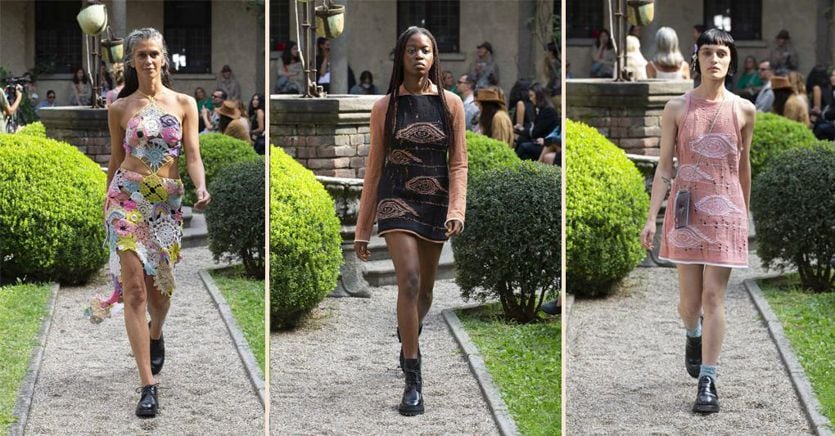The key points
- In the last two years, numerous brands (N.21, Gucci, Valentino, Dolce & Gabbana) have launched projects to support emerging
- Fashion patronage helps young talents gain visibility after the pandemic
- Capital and adequate support in the choices can make the difference
If the policies of support to the young writers of Gaio Cilnio Mecenate were thought they had the purpose and the merit of making the Rome of Octavian Augustus shine (which has come down to us thanks to Horace and Virgil), the strategy of support to young stylists aims not only to promote a positive and dynamic image of never to strengthen the idea of an Italian fashion that comes out of the pandemic not folded into itself, but open to new stimuli and aims to flourish again nourished by new lymph. Under the banner of collaboration between institutions, big brands, small businesses.
The Valentino-Cnmi project starts from Marco Rambaldi
In the last two years, in fact, the announcements of ad hoc programs to support emerging talents have multiplied – heavily penalized by a pandemic that has (albeit temporarily) brought even large groups to their knees – which see the most established brands at the forefront. This is the case, for example, of Valentino who announced – in partnership with the National Chamber of Fashion – a project that will see a young designer guest of the social channel Instagram @maisonvalentino from season to season to tell about his creations and his vision. The project will start in February, during the Milan fashion week, with Marco Rambaldi.
Born in 1990, from Bologna, Rambaldi in 2014 won the Cnmi “Next Generation” competition and has already presented his collections in Milan several times. “For us it is a great opportunity: ours is an independent brand, based in Bologna, and presenting our creations on Valentino’s instagram account will certainly be a driving force for global visibility”, explains Marco Rambaldi. Which does not deny, however, that financial aid beyond visibility is essential for an emerging brand: «It is essential to guarantee investments. For example, we would like to invest in our e-commerce platform ». During the pandemic, in fact, «online sales balanced the sell out low recorded in physical stores. We sell through large platforms such as Farfetch or Rinascente, but we would like to structure our e-store better ». According to the designer – who has two partners – the pandemic has not only had a negative impact on small brands: “During the physical fashion weeks, the insiders were unable to go to our event or see the collection, while the digital format allowed to get more attention ”.
Big brands in support of emerging companies
Many of the projects developed by the “established” brands to favor young talents revolve around visibility. The emerging designers selected by Alessandro Michele, for example, find space on the multifunctional platform Gucci Vault. Which, in addition to highlighting profiles and collections, offers the consumer the opportunity to buy products directly. The founder and creative director of N.21 Alessandro Dell’Acquainstead, in September 2020, it launched a mentorship program in collaboration with the Tomorrow Ltd. showroom. For 2022 (and therefore again for the winter season) the support goes to the Neapolitan designer Valerio Leone. Lastly in chronological order, the announcement of Dolce & Gabbana that, during the women’s fashion week in February, will enhance the work of the Korean designer Miss Sohee who will have the opportunity to present her collection in the maison’s spaces in Milan. A way to draw attention to the brand in a moment – like fashion week – in which buyers and journalists who are in the city can make a difference in the future of the project.
Those listed are not the first forms of “patronage” to be found in Italian fashion. Already in 2013 Giorgio Armani made his Armani Teatro available to creatives deserving of a slot in the official calendar of Milan fashion week (and an exceptional location): from Andrea Pompilio (the first to show in via Bergognone with SS 2014) to the Japanese Ujoh, passing through Lucio Vanotti and Vivetta. Not to mention the projects organized by the institutions, such as Pitti, White and the National Chamber of Fashion: the last in chronological order wasCnmi-Rinascente alliance for the promotion of 11 emerging brands in the Rinascente Duomo store and online, with the Milan Fashionable Project.
